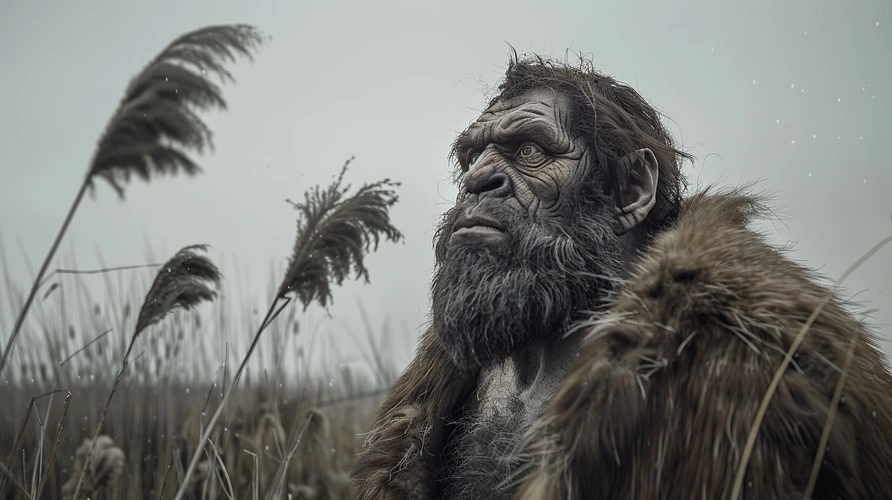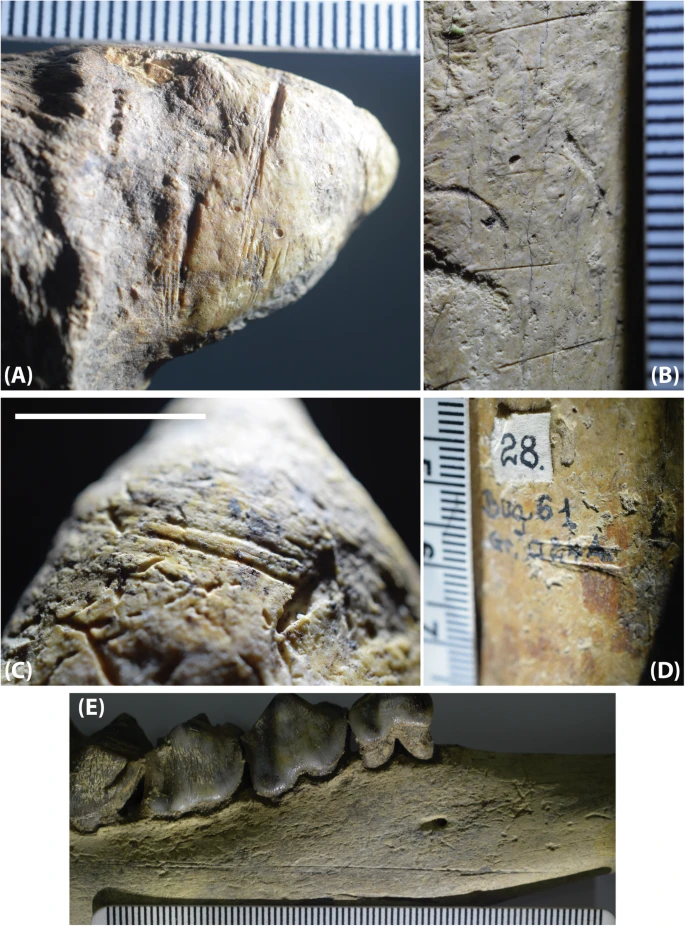
Posted on 01/23/2025 12:02:55 PM PST by Red Badger

Scientists have uncovered evidence suggesting that hominins, the ancient relatives of modern humans, were present in Europe at least 1.95 million years ago.
This finding, from the Grăunceanu site in Romania’s Olteț River Valley, represents the earliest-known trace of hominin activity on the continent, predating prior European hominin fossils by more than half a million years.
The discovery, recently published in Nature Communications, hinges on meticulously analyzed cut-marked animal bones unearthed in a fossil-rich region historically overlooked in discussions of early human migration.
According to researchers, these cut marks were made with tools, indicating that hominins were actively butchering animals in what is now central Romania. This marks a pivotal shift in our understanding of early human dispersals beyond Africa.
“The timing of the initial dispersal of hominins into Eurasia is unclear,” researchers wrote. “Our results, presented along with multiple other lines of evidence, point to a widespread, though perhaps intermittent, presence of hominins across Eurasia by at least 2.0 Ma.”
For decades, the Dmanisi site in Georgia, dated 1.8 million years ago, was considered the earliest hominin presence in Eurasia. While numerous sites across Asia and the Middle East hinted at hominin activities earlier than Dmanisi, Europe remained a puzzle.
The Romanian site at Grăunceanu, first excavated in the 1960s but only recently dated using cutting-edge uranium-lead methods, now reshapes that narrative. With high confidence dating to 1.95 million years ago, it challenges established timelines and opens new debates about the pathways and adaptability of early human populations.
The findings could fundamentally change our understanding of when and how hominins ventured into Europe, suggesting that they adapted to a wide range of environments far earlier than previously believed.
The team’s conclusions stem from a meticulous analysis of nearly 5,000 animal bones from the Grăunceanu site. Among these, 20 specimens showed distinct cut marks—seven with high confidence and another 13 deemed probable.
The marks were concentrated in areas typical of defleshing activities, such as tibias and mandibles, suggesting intentional butchery rather than random environmental or predatory effects.
These marks were identified using qualitative and quantitative methods, including advanced 3D imaging and comparative statistical analyses. The team says they eliminated alternative explanations, such as trampling or tooth marks, solidifying the case for hominin involvement.
The bones belonged to various species, including artiodactyls (even-toed ungulates) and smaller carnivores, reflecting a diverse and opportunistic subsistence strategy.
These findings suggest that Grăunceanu offers more than just evidence of early human presence. It paints a picture of the environment hominins inhabited. The region, part of the Dacian sedimentary basin, was a mix of open grasslands and woodlands, characterized by mild winters and distinct wet and dry seasons. Isotopic analyses of a horse tooth from the site revealed variations in rainfall and temperature, suggesting seasonal adaptations by fauna and hominins.
The fauna at Grăunceanu included a surprising array of species, from ostriches to pangolins, which typically thrive in warm climates. This indicates that while winters were mild, hominins still faced environmental challenges, such as seasonal droughts and limited resources, that would have tested their resilience and adaptability.
The discovery could have broad implications for understanding early human evolution and migration. The timeline for hominin dispersal out of Africa has been a subject of intense debate, with the first migrations generally dated to around 2 million years ago. The Grăunceanu evidence suggests that these early populations were moving more rapidly and adapting to diverse and challenging environments than previously thought.
The tools used by these hominins remain elusive, as no lithics (stone tools) have been conclusively linked to the site. However, similar sites in the region have yielded simple flake tools, consistent with early Homo species. This raises the possibility that the Grăunceanu hominins were part of a broader wave of migration that included primitive tool technologies.
Despite its significance, the Grăunceanu site raises as many questions as it answers. Without direct hominin fossils, researchers can only speculate about which species were responsible for the cut marks. The timing aligns with the earliest appearances of Homo erectus in Africa, but other possibilities, including Homo habilis or even an unknown hominin, cannot be ruled out.
The lack of stone tools also limits the ability to connect these hominins to broader cultural or technological trends. Future excavations and analyses will aim to uncover more direct evidence of their presence, such as additional tools or, ideally, fossilized remains.
Ultimately, the discovery at Grăunceanu underscores the importance of revisiting older fossil sites with modern techniques. As more regions are studied, the timeline of human evolution and migration continues to expand, revealing a more complex and dynamic story than previously imagined.
“Hominins as a whole, and particularly members of the genus Homo, are often characterized by their environmental flexibility,” researchers concluded. “The widespread presence of hominins in Eurasia circa 2 Ma, as we argue and provide evidence for here in the form of cut-marked bones securely dated to minimally 1.95 Ma, is further support for this flexibility.”
“While it is clear that the hominin presence in Eurasia at this time was likely geographically and temporally discontinuous, the preponderance of ephemeral traces for hominins in this region can no longer be ignored.”
Tim McMillan is a retired law enforcement executive, investigative reporter and co-founder of The Debrief. His writing typically focuses on defense, national security, the Intelligence Community and topics related to psychology. You can follow Tim on Twitter: @LtTimMcMillan. Tim can be reached by email: tim@thedebrief.org or through encrypted email: LtTimMcMillan@protonmail.com
IMHO they're not indicative of cut-marks. Suggestive? Perhaps. But when my cat was a kitten and got excited about a squirrel outside the window behind me, she scratched me in her haste to climb over me to get to the window. The scratches were in smooth straight lines, like in the images of the article.
Look at how perfectly parallel most of the lines are in the images. Does that look like multiple strikes from a person using a cutting tool, or more like single strike attacks from something with multiple sharp edges (i.e. teeth from one bite or one paw-strike with multiple claws)?
Even when I'm using a knife at a cutting board, my cuts aren't as parallel to each other as the ones in images A, C, and D. (Of course, maybe I'm not as good at it as my wife. LOL) Those lines in the images are so perfectly in line with each other that to me they look more like a scratch from a modern dog or cat (or some prehistoric animal with a paw or talon containing multiple claws). Of course, since these are bones I'd lean more towards scars from a bite with the prey doing a pulling motion to escape the bite (or the predator biting with a tearing motion to tear meat off of the bone). These perfectly parallel lines just don't look to me like a single point object striking the bone multiple times (which would make unparallel lines).

“A” is absolutely tell tale with no doubt. I have butchered many deer and stock on our ranch. I even once hand butchered a goat with stone tools on purpose to find out how hard it was. Those are the real deal...
Many Romanian still look like the image above.... 🙈🙉🙊
Disclaimer: Opinions posted on Free Republic are those of the individual posters and do not necessarily represent the opinion of Free Republic or its management. All materials posted herein are protected by copyright law and the exemption for fair use of copyrighted works.